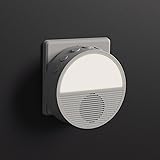Unlock Deep Relaxation: Your Guide to Bedtime Yin Yoga for Restful Sleep
We all know the feeling. After a long, demanding day, the body aches, the mind races, and the prospect of a truly restorative night’s sleep seems like a distant dream. The weight of daily stresses can often accumulate, forming a metaphorical “armor” around us, making it challenging to transition from the day’s activity to the peaceful surrender required for deep rest. This struggle is quite common, impacting countless individuals globally, as reported by various sleep studies. Fortunately, a gentle yet profound solution exists, as demonstrated in the insightful video above: **Bedtime Yin Yoga**.This calming practice is specifically designed to unravel the tension built up over hours, shifting the body’s chemistry towards repair and recovery. It is a methodical approach to unwinding, offering a pathway to not just fall asleep, but to sleep *better* and wake up truly refreshed.
Understanding the Essence of Bedtime Yin Yoga
Yin Yoga represents a distinct approach to physical practice, contrasting sharply with more dynamic, muscle-activating styles. This contemplative form involves holding passive poses for extended periods, typically between two to five minutes, allowing gravity to gently stretch the deeper connective tissues—ligaments, joints, fascia, and bones.
Consequently, the focus shifts from muscular engagement to a gentle, sustained release within these often-overlooked areas. As the video thoughtfully suggests, this practice invites practitioners to “bathe in that beautiful yin-like moon, lunar energy,” fostering an inner quietude that is essential for pre-sleep preparation. This emphasis on stillness facilitates a profound nervous system shift, moving from the active “fight or flight” sympathetic state to the restorative “rest and digest” parasympathetic response.
The Science Behind Serenity and Sleep
The benefits of incorporating Yin Yoga into an evening routine are supported by a growing body of research highlighting the profound connection between gentle movement, mindfulness, and sleep quality. While specific statistics on Bedtime Yin Yoga are still emerging, general studies on yoga’s impact on sleep are compelling. For instance, a 2012 study published in the *Journal of Clinical Sleep Medicine* found that daily yoga practice significantly improved sleep for individuals with chronic insomnia.
Moreover, a review published in *Evidence-Based Complementary and Alternative Medicine* in 2013 indicated that yoga practices, including those focused on restorative postures, can reduce stress and anxiety, which are primary contributors to sleep disturbances. When the physical body is held in gentle, passive stretches, the mind is given an opportunity to quiet. The practice of focusing on the breath, as suggested by the instructor, allows for a conscious disengagement from daily worries, thereby preparing both mind and body for **deep sleep**.
Key Poses for a Restful Bedtime Yin Yoga Practice
The video above expertly guides you through several foundational Yin Yoga poses that are particularly effective for evening relaxation. These poses, held for “a couple of minutes” each, are carefully selected to target areas of common tension, making them ideal for unwinding before bed. Props such as blocks, bolsters, or even household pillows can be utilized to provide additional support, making the poses more accessible and comfortable, as demonstrated by Travis Eliot.
Child’s Pose (Balasana)
This gentle and grounding pose serves as an excellent starting point for any **Bedtime Yin Yoga** sequence. The forehead rests on the mat or a prop, allowing the nervous system to calm and the mind to turn inward. Physiologically, Child’s Pose gently stretches the hips, thighs, and ankles while promoting a sense of security and surrender, which is crucial for preparing the body for sleep.
The act of folding forward facilitates a withdrawal of the senses, encouraging introspection and a release of external stimuli. As Galileo once mused, “It is a beautiful and delightful sight to behold the body of the moon,” and in Child’s Pose, one might similarly imagine bathing in the calming, reflective energy of the night, shedding the day’s burdens.
Sleeping Swan (Yin Variation of Pigeon Pose)
Sleeping Swan is a deeply effective pose for releasing tension stored in the hips and glutes, areas often tightened by prolonged sitting or standing. One leg is bent forward, with the shin roughly parallel to the top of the mat, while the other leg extends straight back.
As the torso drapes forward over the front leg, a profound release is initiated in the hip flexors and outer hip. This pose encourages the melting away of muscular “armor” and allows “the tenderness and the vulnerability underneath and behind the armor to be exposed,” fostering a sense of surrender and emotional release that is conducive to a peaceful mind for **better sleep**.
Butterfly Pose (Baddha Konasana)
Butterfly Pose specifically targets the inner thighs and groin, areas where significant tension can accumulate throughout the day. With the soles of the feet together and knees splayed open, the upper body folds forward, allowing a gentle and sustained stretch in these typically tight regions.
This pose is particularly beneficial for dissolving the kind of physical and energetic tension that, if carried into bed, can disrupt sleep patterns. By releasing this deep-seated tension, the body becomes more relaxed and receptive to rest. Supported variations, utilizing a block or bolster under the head, can enhance comfort and encourage deeper relaxation.
Double Knee Twist (Supine Spinal Twist)
Reclining on your back, allowing both knees to gently fall to one side, provides a soothing twist to the spine. This pose facilitates a gentle detoxification, promotes spinal mobility, and gently massages the abdominal organs, which can aid in digestion and relaxation.
The focus here is on allowing the shoulders to remain grounded, further extending the stretch across the chest and upper back. This release in the torso helps to undo any rigidity from the day, inviting a feeling of lightness and openness that is deeply calming before **bedtime**.
Savasana (Corpse Pose)
Savasana is the culminating pose of any yoga practice, and its importance for **Bedtime Yin Yoga** cannot be overstated. Lying flat on the back, arms and legs gently splayed, allows the body to fully integrate the benefits of the preceding poses.
This pose is not merely about resting; it is about conscious relaxation and stillness. It is the ultimate moment to find “inner quiet, feeling that energy of serenity, rippling out through every single fiber in the body.” As a deep inhale is taken through the nose and a sigh released through the mouth, the body is invited to fully “let it go,” preparing for the seamless transition into a night of profound and undisturbed sleep.
Cultivating a Mindful Bedtime Routine for Optimal Sleep
The effectiveness of **Bedtime Yin Yoga** is significantly amplified when integrated into a broader mindful evening routine. As the video’s instructor wisely suggests, after practice, it’s often best to “put away the digital devices and go straight to sleep.” The blue light emitted by screens can disrupt melatonin production, the hormone essential for regulating sleep cycles.
Creating a pre-sleep sanctuary, dimming lights, and engaging in calming activities such as reading a physical book or listening to soothing music, can further enhance the effects of your Yin Yoga practice. The wisdom of the Buddha resonates strongly in this context: “Meditate, live purely, be quiet, do your work with mastery. Like the moon, come out behind the clouds and shine.” This speaks to the power of consistent, mindful effort in achieving mastery over one’s well-being, particularly regarding the quality of sleep.
By dedicating these crucial moments to a gentle **Yin Yoga** sequence, you are actively choosing to shed the day’s tension, embrace stillness, and cultivate the optimal conditions for genuine rest and recovery. This intentional shift ensures that much health, much wealth, and much love are indeed received through the rejuvenating power of a good night’s sleep.








